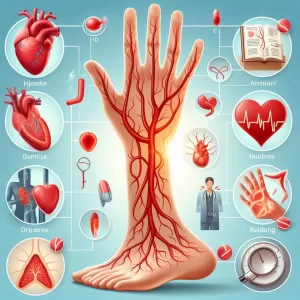What is Orthodontist Follow-Up: Overview, Benefits, and Expected Results
Headline: The Power of Positive Thinking
Body: Positive thinking is a powerful tool that can help you achieve your goals and live a happier life. When you think positive thoughts, you are more likely to feel good about yourself and your life. You are also more likely to take action and make things happen.
``` Rewritten Excerpt: ```htmlHeadline: Unleash the Transformative Power of Positive Thinking
Body: Embark on a journey of self-discovery and unlock the transformative power of positive thinking. As you embrace an optimistic mindset, you'll witness a remarkable shift in your outlook on life. Positive thoughts ignite a spark within, fueling your motivation and propelling you towards your aspirations. Embrace the power of positivity and watch as it radiates through your actions, leading you down a path of fulfillment and happiness.
``` Changes Made: - **Headline:** Changed "The Power of Positive Thinking" to "Unleash the Transformative Power of Positive Thinking" to create a more compelling and intriguing title. - **Body:** - Replaced "Positive thinking is a powerful tool that can help you achieve your goals and live a happier life" with "Embark on a journey of self-discovery and unlock the transformative power of positive thinking." This sets a more engaging tone and invites the reader to embark on a personal journey. - Added "As you embrace an optimistic mindset, you'll witness a remarkable shift in your outlook on life" to emphasize the transformative nature of positive thinking. - Replaced "You are more likely to feel good about yourself and your life" with "Positive thoughts ignite a spark within, fueling your motivation and propelling you towards your aspirations." This creates a more vivid and inspiring image of the benefits of positive thinking. - Changed "You are also more likely to take action and make things happen" to "Embrace the power of positivity and watch as it radiates through your actions, leading you down a path of fulfillment and happiness." This highlights the tangible impact of positive thinking on one's actions and overall well-beingDefinition and Overview
Orthodontist follow-up is an appointment with an orthodontist following treatment or installation of an oral appliance such as braces and retainers.
Orthodontics is a branch of dentistry that focuses on treating or correcting teeth misalignments and bite problems. A specialist in this field is called an orthodontist.
The teeth are some of the strongest parts of the body and are responsible for a number of crucial activities such as chewing or biting. The cells that form into teeth buds begin to appear during the early weeks of conception. These buds then develop further as the child grows older. By the time the child is around six months, the first tooth appears.
The teeth that appear first are known as milk or baby teeth. They are also described as temporary as soon they will come loose to give way for the permanent set.
Either way, proper teeth alignment becomes necessary. Otherwise, different oral and dental issues may occur, such as biting and chewing problems and putting undue stress to the facial muscles. Some may also feel conscious about how their teeth look.
Problems with the teeth, particularly those that have something to do with alignment and bite issues, can be corrected by using oral appliance like braces and retainers as well as headgear, palatal expander (to widen the jaw), and bumpers for the lips and cheeks.
A typical orthodontic treatment includes:
- Getting a complete dental examination including an X-ray
- Performing an extraction if necessary
- Obtaining a dental impression
- Placing the appliance on the teeth
These steps may be completed in one or more visits.
Who Should Undergo and Expected Results
A follow-up is performed on:
Children who are seven years old and above – Permanent teeth can appear as early as five years old, although they are more common around seven. By this time, the dentist can carry out an orthodontic evaluation. If the teeth alignment or bite needs to be corrected, the child is referred to an orthodontist. Although the same assessment can be conducted at any age, correcting teeth before the permanent teeth start to erupt may become unnecessary.
Individuals with an oral appliance – These oral appliances are used to align teeth and in the process, teeth move to their supposed correct positions. To ensure that they continue to do so, follow-up is performed to make regular adjustments.
People who need new appliance – Movement of teeth can happen gradually and this can take at least 3 to 5 years. Around this time, the appliance may already be worn or old that it needs to be changed. This can be accomplished during the follow-up.
Although rare, an emergency orthodontic visit is necessary after which follow-up care is scheduled.
How Does the Procedure Work?
An orthodontic follow-up is scheduled every 4 to 6 weeks, depending on the progress of the teeth movement. During this time:
The orthodontist checks the condition of the teeth and the surrounding parts such as the lips, cheeks and gums.
The orthodontist performs the necessary adjustments. For example, the bands may be changed or moved, as well as the wires. This is essential so the teeth are gradually but correctly guided toward their ideal positions.
If necessary, new exams such as dental X-rays are conducted.
The orthodontist may also have to address the following:
Emergency orthodontics – This refers to situations that need immediate or urgent attention and correction from an orthodontist. These include broken or loose wires and ligatures, which may be uncomfortable and cause damage not only to the mouth but also to the rest of the appliance.
General discomfort – Installation of braces may be painful or uncomfortable during the first few days. If the patient finds it unbearable, the orthodontist can prescribe pain medications.
Counseling – The orthodontist is the best person to ask as to what the best appliance to use, as well as when to make replacements such as with braces and retainers.
Possible Risks and Complications
Not all patients can commit to regular follow-ups with an orthodontist due to a variety of issues. Irregular follow-up can be a problem since it may introduce certain issues. For example, the orthodontist may not be able to detect incorrect teeth movements or loosening appliance on time, and this can cause additional problems or extend the treatment time.
Reference:
- Tinanoff N. Malocclusion. In: Kliegman RM, Behrman RE, Jenson HB, Stanton BF, eds. Nelson Textbook of Pediatrics. 19th ed. Philadelphia, Pa: Saunders Elsevier; 2011:chap 301.
/trp_language]
**Question: What is Orthodontist Follow-Up?**
**Answer:** Orthodontist follow-up is an essential component of orthodontic treatment that ensures the effectiveness and success of the treatment plan. It involves regular visits to the orthodontist’s office throughout the course of treatment, typically ranging from a few months to several years. During these follow-up appointments, the orthodontist evaluates the progress of the treatment, makes necessary adjustments to the orthodontic appliances, and addresses any issues or concerns that arise.
**Question: What are the Benefits of Orthodontist Follow-Up?**
**Answer:** Orthodontist follow-up offers numerous benefits for patients undergoing orthodontic treatment, including:
– **Monitoring Progress:** Follow-up appointments allow the orthodontist to closely monitor the progress of the treatment and ensure that the teeth are moving in accordance with the desired outcome.
– **Adjustments and Fine-Tuning:** As treatment progresses, the orthodontist may need to make adjustments to the orthodontic appliances to maintain the desired tooth movement and ensure optimal results.
– **Addressing Concerns:** Follow-up visits provide an opportunity for patients to express any concerns or issues they have about their treatment, such as discomfort, loose brackets, or any changes they notice in their oral health.
– **Preventing Complications:** Regular follow-up appointments allow the orthodontist to identify and address potential complications early on, minimizing the risk of setbacks and ensuring a smooth treatment process.
**Question: What are the Expected Results of Orthodontist Follow-Up?**
**Answer:** Orthodontist follow-up aims to achieve the following expected results:
– **Achieving Optimal Tooth Alignment:** Through regular monitoring and adjustments, the orthodontist strives to achieve the desired tooth alignment and a harmonious smile.
– **Functional Improvement:** Orthodontic treatment can improve the functionality of the bite, correcting issues such as overbites, underbites, and crossbites. Follow-up appointments help ensure that the treatment addresses functional problems effectively.
– **Esthetic Enhancement:** The primary goal of orthodontic treatment is to improve the appearance of the smile and enhance facial aesthetics. Follow-up visits allow the orthodontist to ensure that the treatment is achieving the desired esthetic outcome.
– **Long-Term Stability:** Orthodontic follow-up contributes to the long-term stability of the treatment results, reducing the likelihood of teeth shifting back to their original positions after treatment completion.
**Question: How Often Should Orthodontist Follow-Up Appointments Be Scheduled?**
**Answer:** The frequency of orthodontist follow-up appointments varies depending on the individual treatment plan and the patient’s specific needs. Generally, appointments may be scheduled every four to eight weeks during the active phase of treatment and less frequently as the treatment progresses and nears completion. The orthodontist will determine the appropriate schedule for each patient based on their progress and treatment goals.
2 Comments
Leave a Reply
Popular Articles








# Orthodontist Follow-Up: Ensuring a Successful Journey to a Perfect Smile
# Orthodontist Follow-Up: A Crucial Step for Maintaining a Healthy and Beautiful Smile